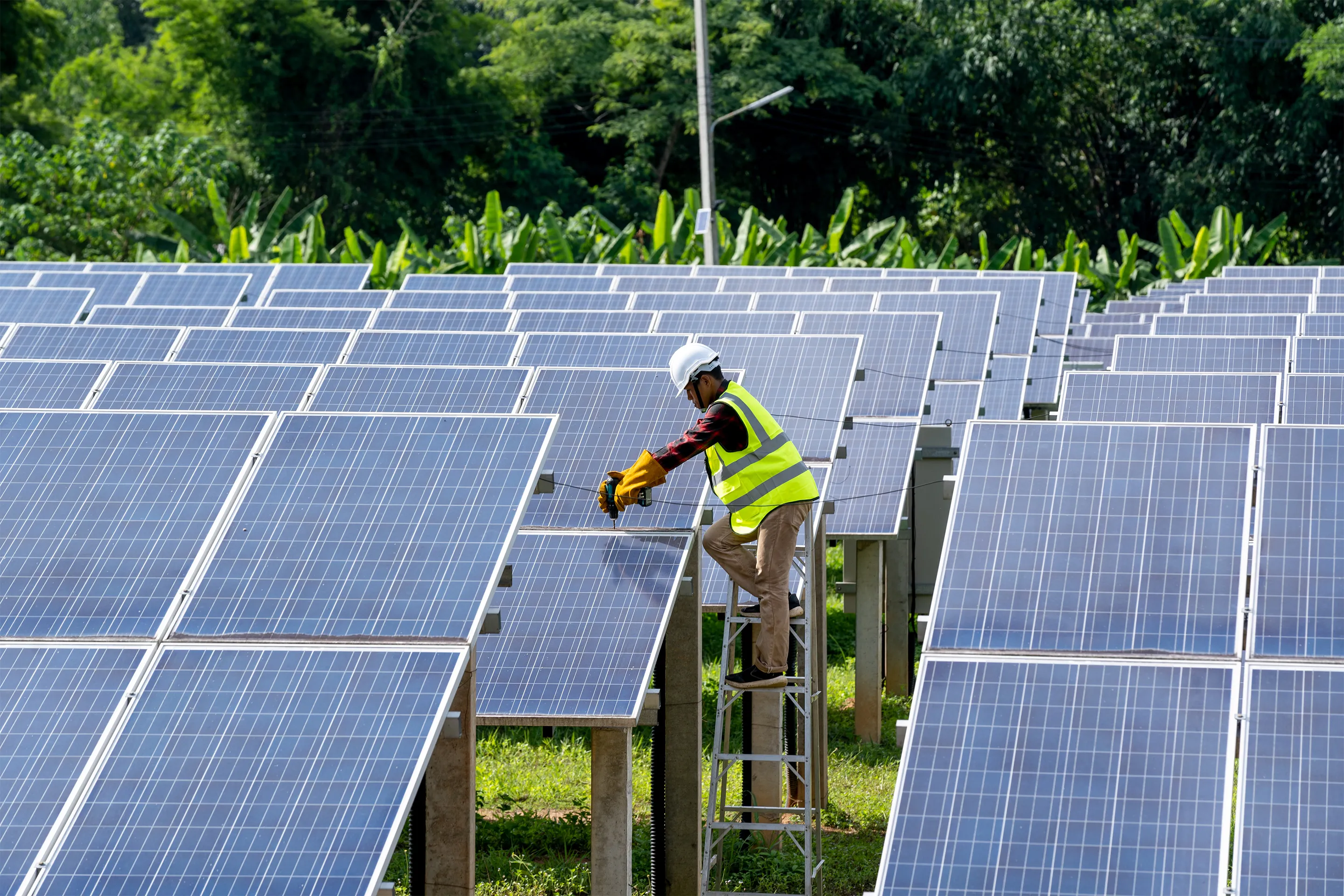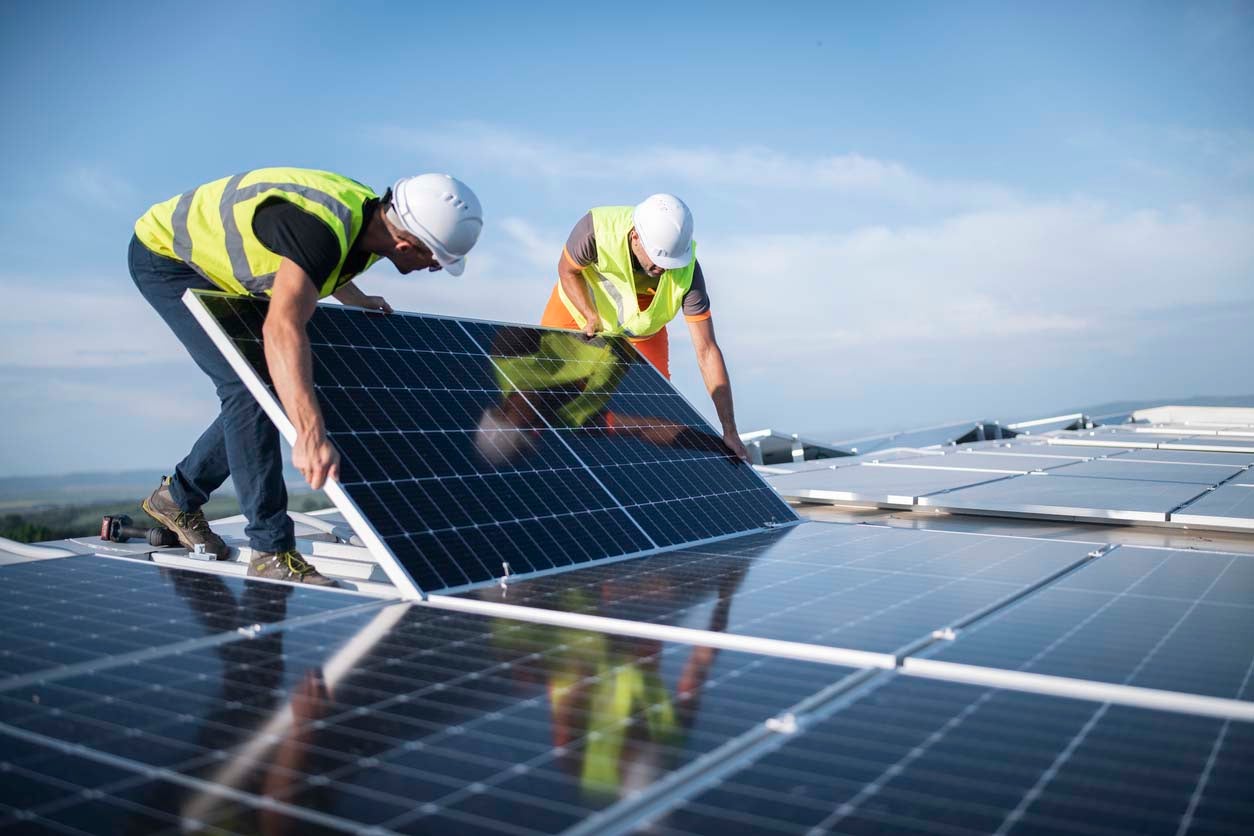10 Easy Facts About Commercial Solar Panels Pa Shown
10 Easy Facts About Commercial Solar Panels Pa Shown
Blog Article
Home Solar Power Installation PA: Our Company Focuses On The Setup And Management Of Photovoltaic Energy Systems
History and Development of Solar Panel Business
The creation of photovoltaic panel business can be traced back to the 1800s when Alexandre Edmond Becquerel discovered the photovoltaic effect. Would he have imagined how his discovery would revolutionize the method we harness energy?
Early Starts

In 1954, Bell Labs developed the very first practical photovoltaic cell. This marked a considerable milestone in the history of solar energy. They were at first utilized to power space satellites, however who understood this was simply the beginning?
Evolution and Development
- In the 1970s, an energy crisis resulted in increased interest in renewable energy sources, including solar power.
- By the 1990s, developments in technology and increasing ecological awareness caused the growth of photovoltaic panel companies globally.
A New Age
As we went into the 21st century, the solar industry experienced an exponential development. The demand for clean and renewable resource brought about a new age in the solar panel industry.
Remarkable Truths
- The world's first solar power station was integrated in 1982 in Hisperia, California.
- By 2019, solar energy had ended up being the world's fastest-growing source of power.
Undoubtedly, the journey of solar panel business has been exceptional, hasn't it? The future holds tremendous capacity, with constant improvements leading the way for a sustainable future. Can we picture a world powered completely by solar power?
Progressing
Today, photovoltaic panel business continue to innovate, pursuing more efficient and cost-effective services. The development of solar energy has actually come a long way, and yet, the journey has actually simply begun.
The Core of Photovoltaic Panel Production
Ever wonder what enters into producing those glossy, sun-loving photovoltaic panels? The process is as impressive as completion product (Solar Panel Company). High-purity silicon, the primary ingredient in solar panels, goes through various improvements to guarantee its performance and toughness
From Sand to Silicon
Crystalline silicon, the backbone of most photovoltaic panels, originates from simple sand. It's a remarkable journey, isn't it? The sand undergoes a high-temperature response with carbon to form silicon. Nevertheless, this isn't just any silicon. The silicon used in solar panels is "solar-grade," with a pureness of 99.9999%. It's this pureness that allows the panels to effectively transform sunshine into power.
Ingot Formation
When the silicon is pure enough, it's time to form ingots. Image a big, round block of solid silicon. How is this accomplished? Through a process called Czochralski process, where the silicon is melted and after that slowly recrystallized. It's a sluggish dance of science, leading to a solid product that is practically as pure as the raw silicon itself.
Slicing into Wafers
The ingots are then sliced into wafer-thin pieces, like slicing a loaf of bread. Each piece is a potential solar cell, waiting to harness the power of the sun. Did you understand that the silicon wafers are just about 200 micrometers thick? That has to do with half the thickness of a human hair! The procedure requires precision and perseverance, but the result is a set of wafers prepared to be turned into solar batteries.
Producing Solar Cells
With the wafer prepared, it's time for the magic to occur. The silicon wafer is 'doped' with other aspects like phosphorous and boron to produce an internal electrical field. It's this field that makes it possible for the conversion of sunshine into electrical energy. Complex, isn't it?
Assembly and Quality Control
Solar cells resemble puzzle pieces that come together to form a solar panel. The cells are soldered together in a grid-like pattern, then covered with a protective layer of glass. The last step includes extensive quality assurance checks. It's important that every solar panel performs at its peak, would not you agree?
Expert Suggestion
Always remember that even the most efficiently manufactured photovoltaic panel can lose efficiency due to dirt and particles accumulation. Routine cleansing can substantially improve your panels' efficiency.
Understanding the Ecological Effect of Photovoltaic Panel Companies
Ever considered the environmental footprint of a photovoltaic panel company? Green innovation, such as solar, has changed our energy landscape, but what about the behind-the-scenes impact?
The Manufacturing Process: A Double-Edged Sword
The manufacturing process for photovoltaic panels requires a substantial quantity of energy. This process, check here known as 'em bodied energy', can be seen as a type of 'energy debt'. It's a little like obtaining today's sunlight to power tomorrow's energy requirements. But fret not, the energy payback time is typically much shorter than you 'd think!
- The energy repayment duration for photovoltaic panels is usually 1-4 years.
- After this period, the energy produced is basically carbon-free.

Life After Decommission
And what happens when a photovoltaic panel reaches the end of its life-span? Can it just be tossed into the trash? No, that would not be extremely green, now, would it?
A practical option is recycling. While solar panel recycling is still in its infancy, it holds a world of capacity. Recycling not only keeps products out of land fills but also decreases the need for brand-new raw products.
Accountable Sourcing: More Than A Buzzword
Where does the silicon come from, you ask? The market's demand for silicon and uncommon minerals can lead to destructive mining practices. Responsible sourcing is therefore important to lower harmful environmental effects.
Minimized Carbon Emissions: The Larger Image
Let's not forget the larger picture: solar energy substantially minimizes carbon emissions. When installed, photovoltaic panels produce tidy, eco-friendly energy, balancing out their initial manufacturing footprint.
In brief, the environmental impact of solar panel business is an intricate concern. Nevertheless, with accountable practices, the pledge of a cleaner, greener future is well within our grasp.

Financial Efficiency and Market Share of Photovoltaic Panel Business
Ever wondered why some photovoltaic panel business - Best Solar Panel Company In PA beat others in the market? What sets them apart? The essential lies in their financial efficiency and market share
Financial Performance: An Important Sign
Financial performance plays a critical role in the success of any organization. For solar panel business, it's no various. Strong monetary efficiency enables these business to purchase innovative innovation, research study, and development, thus creating high-quality, effective photovoltaic panels.
How do they accomplish this? With a concentrate on cost efficiency and tactical financial investments. Business that manage to minimize production expenses without compromising on quality tend to fare much better in the market.
Market Share: A Procedure of Success
Market share, on the other hand, is a direct reflection of a company's appeal among consumers. A high market share indicates more property owners are choosing their photovoltaic panels over competitors.
So, what's the secret dish for acquiring a bigger market share? It comes down to client satisfaction and brand track record. Business that focus on client needs and maintain a favorable brand image are more likely to record a bigger share of the marketplace.
- Consumer Fulfillment: Solar panel business that deliver reliable products and remarkable customer care tend to have greater client fulfillment rates.
- Brand Track record: A strong brand name reputation is built over time through consistent shipment of quality products and services.
Financial Performance and Market Share: The Cooperative Relationship
Remarkably, the relationship between monetary performance and market share is not one-sided. They feed off each other. A strong financial efficiency can increase a company's market share, while a high market share can improve monetary performance.
As a solar panel company, balancing these 2 aspects is essential for long-term success. A company that disregards either of them might find it hard to maintain its position in the competitive solar market.
The Takeaway
What does all this mean for you? Whether you're a house owner seeking to install solar panels or an investor considering the solar market, understanding the financial performance and market share of photovoltaic panel business is necessary. They are essential signs of a company's health and potential for future development.
Report this page